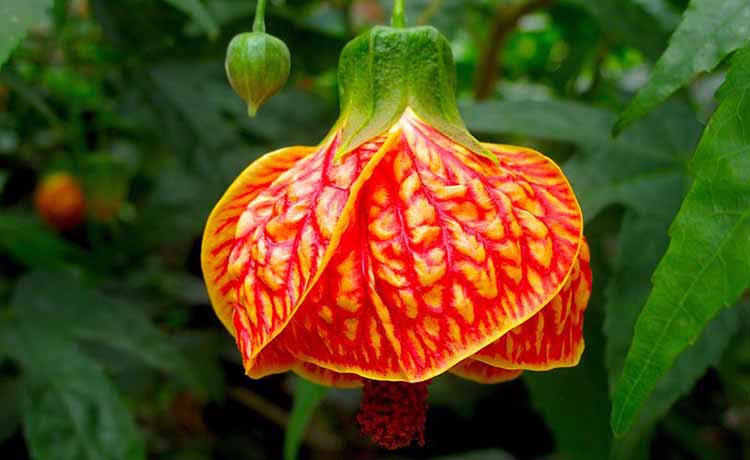
The Chinese lantern flower, also known as Physalis alkekengi, is an attractive plant that produces distinctive orange lantern-shaped fruits. Here's a step-by-step guide on how to grow Chinese lantern flowers:
Selecting a location: Chinese lanterns prefer a sunny to partially shaded location in your garden. Ensure the soil is well-draining and fertile.
Planting seeds or seedlings: Chinese lanterns can be grown from seeds or purchased as young seedlings from a nursery. If starting from seeds, sow them indoors in early spring, about 6-8 weeks before the last frost date. Press the seeds lightly into the soil, as they require light for germination. Keep the soil consistently moist and maintain a temperature around 70°F (21°C). Once the seedlings have developed a few sets of true leaves, they can be transplanted outdoors after the danger of frost has passed.
Transplanting: If you have purchased seedlings, transplant them into your garden once the soil has warmed up and all risk of frost has passed. Dig a hole slightly larger than the root ball of the seedling. Place the plant in the hole, ensuring the top of the root ball is level with or slightly above the soil surface. Backfill the hole with soil, gently firming it around the roots.
Watering: Keep the soil consistently moist, especially during the first growing season. Chinese lanterns prefer evenly moist soil but can tolerate some dryness between waterings once established. Water deeply and thoroughly, allowing the top inch (2.5 cm) of soil to dry out before watering again.
Mulching: Apply a layer of organic mulch, such as straw or wood chips, around the base of the plants. Mulching helps retain soil moisture, suppress weed growth, and regulate soil temperature. Leave a gap between the mulch and the stems to prevent excess moisture buildup and potential rot.
Support: Chinese lantern plants can become tall and may require support as they grow. Install stakes or a trellis near the plants to provide support and prevent them from leaning or toppling over.
Fertilization: Chinese lanterns generally don't require heavy fertilization. However, you can apply a balanced, slow-release fertilizer or a general-purpose organic fertilizer in early spring. Follow the package instructions for the recommended amount and frequency of application.
Pruning: Chinese lanterns benefit from occasional pruning to maintain their shape and promote healthy growth. Prune back any dead or damaged stems and remove excessive growth to keep the plant tidy.
Harvesting lantern fruits: The Chinese lantern plant is renowned for its papery orange lantern-shaped fruits that develop in late summer to early autumn. These fruits can be harvested when they have fully ripened and turned orange. Remove the lanterns from the plant, and allow them to dry naturally indoors for a few weeks before using them in floral arrangements or crafts.
Propagation: Chinese lanterns can self-seed and spread in the garden. If you wish to control their spread, remove any unwanted seedlings or harvest the ripe fruits before they drop seeds.
Chinese lanterns can add a unique and colorful touch to your garden. With proper care, they can provide a stunning display and the intriguing lantern-like fruits.

No comments:
Post a Comment